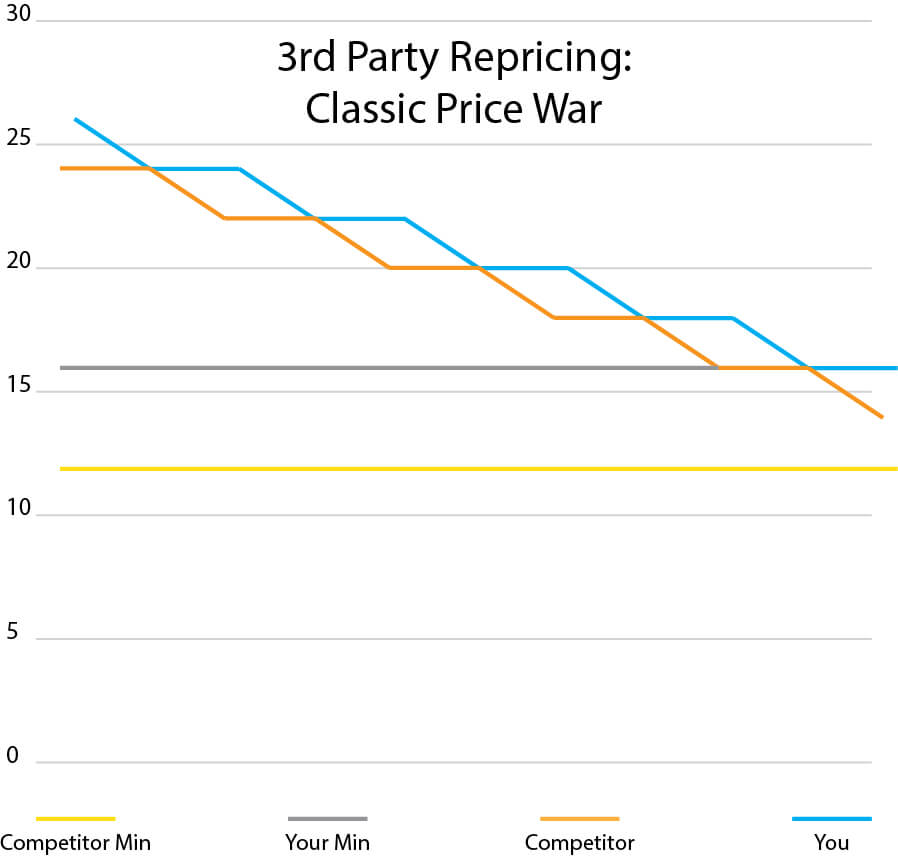By now, you may have noticed the ‘Automate Pricing’ tab in SellerCentral under the ‘Pricing’ header. This is a recently released free tool, currently in Beta phase, whereby you can assign rules to automatically change your prices.
This article aims to be, inasmuch as possible, an objective review of seller reactions to Amazon Automate Pricing, as well as a report on how the tool’s repricing mechanism works, according to Amazon.
Reactions on the Amazon Seller Forums indicate that sellers are primarily concerned that Amazon Automate Pricing will further intensify price reductions, and speed up the so called ‘race to the bottom.’
Further, Amazon have released documentation in their FAQ. This indicates that their price changing mechanism in the Automate Pricing tool will, in fact, have the potential to lower prices much faster than traditional third party repricers.
Here is the description from Amazon’s FAQ:
This means sellers using the Amazon Automate Pricing tool will not spend any time sharing and trading the desired price position with their competition. Rather, one seller will automatically hit their minimum price while the other seller (the one with the lower minimum price) will win the desired price position by being forced to undercut their competition’s minimum.
Graphically, you can visualize this process as follows: The first graph depicts a classic price war as it might occur using 3rd party repricing software: prices drop gradually over time, and you trade the optimal price position with your competitor. At any point in this process you can raise your price and theoretically re-set the war and start over.
The second graph below shows the results that can occur using the Amazon Automate Pricing tool. Instead of triggering a price war over time, their tool calculates the logical conclusion of the price war, and sets prices accordingly with only one price change. This means prices may stay at their minimum allowed value for longer.
But we should bear in mind the fact that small sellers with little or no competition, and who don’t have the resources to buy, operate and maintain repricing software, may find this tool extremely helpful. It also enables sellers who want a shorter sales cycle to avoid some warehousing costs, even if that means lower margins.
In our second installment of this blog post, we will do more of a comparison between automatically changing prices based on pre-set strategies vs. automating simultaneous price and strategy changes.
Please send us your thoughts or questions regarding the topics discussed in this blog, and stay tuned for our follow-up post on repricing.
For more information on this new pricing tool, please see Amazon’s whole FAQ section for Automate Pricing here (requires login).
Austin Fisher is the Product Owner of SellerEngine’s mobile app. As a Profit Bandit expert, his main focus is sourcing techniques and scouting procedures.
